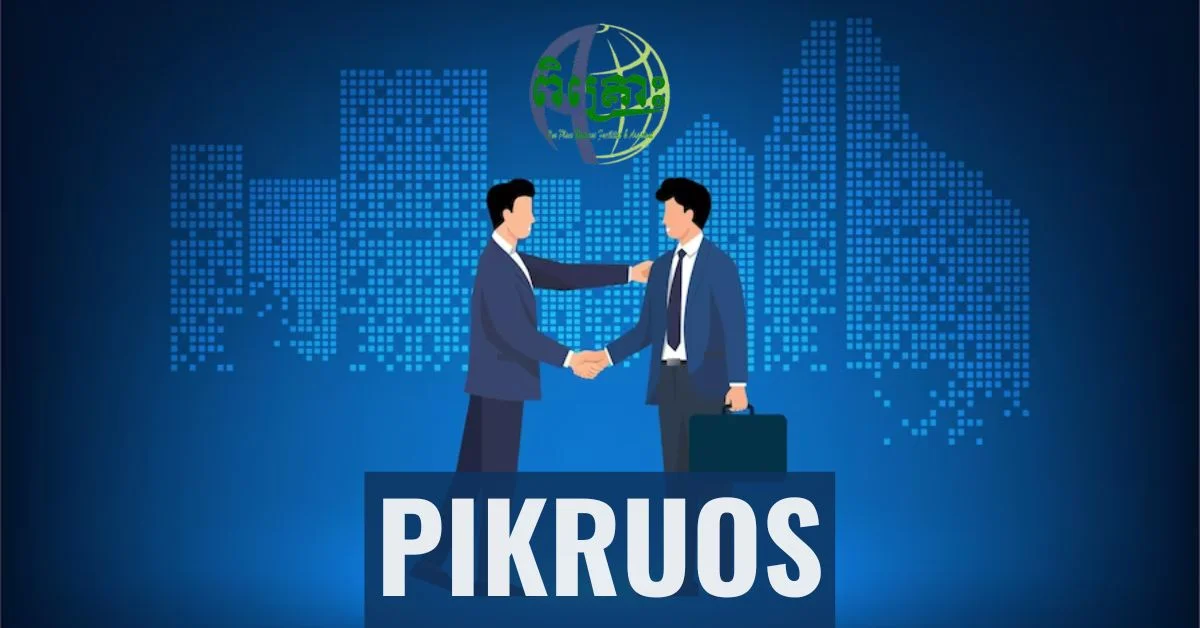BUSINESS
Boosting Productivity Through Effective Meeting Management

Table of Contents
- The Importance of Effective Meetings
- Planning and Preparation
- Setting Clear Agendas
- Engaging Participants
- Using Technology Effectively
- Managing Meeting Time
- Follow-Up and Feedback
- Measuring Success
The Importance of Effective Meetings
Meetings are essential for sharing information, making decisions, and building relationships within an organization. On the other hand, ineffective meeting management can result in time and resource waste. Efficient meeting management not only saves time but also boosts productivity and morale. Meetings provide a platform for open communication, leading to innovative ideas and stronger teamwork. Research indicates that well-structured meetings can significantly improve team performance. Efficient meeting management services such as those provided by https://www.mtievents.com/event-and-meeting-services/ play a crucial role in making meetings successful and worthwhile for everyone involved.
Planning and Preparation
Effective meetings begin long before the actual event. Planning and preparation are key. Choosing the right location, inviting the right participants, and establishing clear objectives can make all the difference. Setting a well-defined purpose and determining the outcomes you wish to achieve are crucial first steps. Studies show that preparing for meetings can lead to a more productive outcome. Preparation entails creating an agenda, distributing any necessary pre-reading materials, and ensuring all technological tools are set up and tested beforehand. Getting team members’ feedback on agenda items can also foster a sense of participation and ownership, which will help the meeting succeed even more.
Setting Clear Agendas
A meeting’s agenda serves as a guide. It helps the team stay focused by outlining the subjects to be covered. A clear agenda also informs participants about the meeting’s objectives and what is expected of them. Without a structured agenda, meetings can quickly become unfocused and drift off-topic. According to Harvard Business Review, well-designed agendas are critical for meeting effectiveness. Each item on the agenda should be actionable and have a designated time slot, which helps keep the discussion on track. By providing the agenda in advance, attendees can better prepare pertinent queries and remarks, resulting in more insightful contributions during the meeting.
Engaging Participants
Engaging participants during the meeting is crucial. Active participation can lead to more innovative solutions and better decision-making. Techniques such as open questions, group activities, and encouraging different viewpoints can enhance engagement. It’s important to create an inclusive environment where everyone feels comfortable sharing their thoughts. Interactive elements like polls, breakout sessions, and Q&A segments can make the meeting more dynamic and keep attendees engaged. Additionally, recognizing and valuing each contribution can foster a positive atmosphere, encouraging more people to participate actively. Ensuring that everyone has an opportunity to voice their opinions can also help uncover new insights that might otherwise be overlooked.
Using Technology Effectively
In the digital age, technology can play a vital role in facilitating efficient meetings. From video conferencing tools to collaborative software, leveraging technology can enhance communication and collaboration. Tools like Zoom, Microsoft Teams, and Slack have become indispensable in maintaining productivity, especially in remote settings. Successful utilization of these tools can bridge geographical gaps and facilitate real-time interaction. Technologies such as shared documents and project management software can help track tasks and ensure everyone is on the same page. Virtual whiteboards and polling tools can also make meetings more interactive and engaging. When used effectively, technology can streamline the meeting process and make it more productive.
Managing Meeting Time
Time management is another critical aspect of successful meetings. Sticking to the scheduled time and agenda prevents meetings from dragging on and keeps participants focused. Allocating specific times for each agenda item can help manage the meeting duration effectively. Techniques such as time-boxing and prioritizing urgent topics can lead to a more streamlined meeting process. Starting and ending meetings on time shows respect for participants’ schedules and helps maintain their focus throughout the meeting. Setting time limits for discussions encourages participants to get to the point and make decisions more efficiently. Using a timer or assigning a timekeeper can help keep the meeting on track.
Follow-Up and Feedback
The meeting doesn’t end when the participants leave the room. Following up on action items and soliciting feedback ensures accountability and continuous improvement. Sending out meeting minutes and setting task deadlines can help maintain the momentum. Feedback from participants can provide insights into what worked well and areas for improvement. Regular follow-ups on action items ensure that tasks are completed and objectives are met. Setting up a system for tracking progress can help identify any roadblocks and address them promptly. Open and honest feedback can also foster a culture of continuous improvement, leading to more effective meetings in the future.
Measuring Success
Finally, measuring the success of meetings is essential for continuous improvement. Metrics such as participant satisfaction, the achievement of meeting objectives, and the completion rate of assigned tasks can provide valuable insights. Regularly assessing these metrics can help fine-tune the meeting process and ensure they remain effective and productive. Surveys and feedback forms can be useful tools in gauging participant satisfaction and gathering input on areas for improvement. Analyzing the outcomes of meetings in terms of decision-making effectiveness and task completion can provide a comprehensive view of the meeting’s success. By regularly reviewing these factors, organizations can refine their meeting strategies and ensure they meet their goals.
BUSINESS
Top Reasons to Shop Directly from Certified European Product Distributors

Shopping directly from certified European product distributors offers many benefits for customers who want quality, reliability, and transparency. These distributors follow strict standards that help build trust between sellers and buyers. When you buy from a certified source, you know the products come from verified channels and go through proper checks. This makes your shopping experience safer and more satisfying.
Why Authenticity Matters When Shopping Online
One of the main reasons people prefer certified distributors is the strong focus on authenticity. Many products in the global market face issues like imitation, altered packaging, or unclear sourcing. Certified distributors help solve these problems by offering products that come straight from approved manufacturers or verified suppliers. This ensures that customers always get real, high‑quality goods without worrying about fake or low‑grade items.
How Certified Distributors Maintain Quality and Consistency
Certified European distributors follow strict rules to maintain the quality and consistency of their products. They are required to store, handle, and ship goods in proper conditions. They also undergo routine checks and evaluations. This helps keep every product in fresh and safe condition before it reaches the customer. These practices improve the overall value of the products and make buying from certified sources more reliable.
Why Customers Prefer Platforms with Clear and Transparent Policies
Many customers feel more comfortable buying from platforms that offer clear details about their sourcing, delivery process, and customer support. Websites like https://mooiproduct.nl/ provide open information about product origins, pricing, and ordering steps. This transparency helps buyers feel secure and confident. When a store openly shares its policies, it becomes easier for customers to make informed decisions.
How Buying Directly Saves Time and Reduces Extra Costs
Purchasing from certified European distributors can also help you save both time and money. When you buy directly, you avoid extra layers of middlemen or resellers. This often leads to better prices and quicker delivery options. It also reduces the risk of delays, incorrect orders, or handling issues. Direct buying keeps the process simple and smooth, especially for customers who value efficiency.
Benefits of Working with Distributors That Prioritize Customer Satisfaction
Quality distributors also invest in strong customer service. They respond quickly, solve problems, and update customers throughout the ordering process. Their goal is to make sure each buyer has a positive experience from the moment they place an order until the delivery arrives. Good communication and reliable service make the shopping journey more enjoyable.
Key Advantages of Choosing Certified Distributors
Shopping from certified European product distributors offers many practical benefits for customers. Under this section, the main advantages are highlighted clearly.
- Secure and trusted product sourcing
- High standards for product handling and packaging
- Faster and more reliable delivery options
- Transparent pricing without hidden charges
- Responsive customer service teams
- Consistent quality in every order
- Better overall value for long‑term customers
The Importance of Verified Storage and Handling Methods
Certified distributors often follow strict storage and handling rules to preserve the condition of the products. This includes temperature‑controlled environments, careful packaging, and the use of proper transport methods. These steps ensure that items remain in excellent condition from the warehouse to your doorstep. Customers appreciate knowing that each product is handled with care and attention.
How Direct Shopping Helps Build Long‑Term Trust
Over time, buying directly from certified distributors builds strong trust between the store and its customers. When buyers receive consistent quality and timely service, they feel more confident returning again. This long‑term trust benefits both the distributor and the customer. It encourages a stable and positive buying experience.
Why Certified European Distributors Stand Out in the Market
In today’s busy online market, certified European distributors continue to stand out because of their dedication to quality, honesty, and smooth service. Their commitment to high standards makes them a smart choice for customers who want dependable products, fair prices, and secure shopping. By choosing certified distributors, customers enjoy peace of mind and a better overall online shopping experience.
Conclusion
Shopping directly from certified European product distributors offers a safe, reliable, and transparent way to buy high-quality goods. These distributors follow strict standards, maintain clear sourcing, and prioritize customer satisfaction. Their commitment to quality, fair pricing, and trustworthy service makes them a strong choice for anyone who values a smooth and secure online shopping experience. Over time, buying from certified distributors builds confidence and ensures that every order meets your expectations.
BUSINESS
Realestateview: Revolutionizing Property Searches

In the dynamic world of real estate, finding the perfect property can be a daunting task. This is where Realestateview steps in, offering a comprehensive platform that revolutionizes the way individuals search for properties.
The Importance of Realestateview
Finding Properties Easily
Gone are the days of endless property visits. Realestateview provides users with a streamlined approach to finding properties that match their criteria effortlessly.
Detailed Property Information
One of Realestateview’s standout features is its commitment to providing detailed property information. From square footage to neighborhood insights, users can make informed decisions.
How to Use Realestateview
Creating an Account
The first step to unlocking the full potential of Realestateview is creating a personalized account. This allows users to save preferences and receive tailored property recommendations.
Customizing Property Preferences
Realestateview empowers users by allowing them to customize their property preferences. From budget constraints to desired amenities, every detail matters.
Navigating the Platform
A user-friendly interface ensures that even those unfamiliar with online property searches can easily navigate Realestateview. The intuitive design simplifies the process.
Advanced Features
Interactive Maps
Discovering the perfect neighborhood is as crucial as finding the right property. Realestateview’s interactive maps provide a bird’s-eye view of potential areas.
Virtual Tours
Incorporating technology to the fullest, Realestateview offers virtual tours. Walk through a property from the comfort of your home, saving time and energy.
Benefits for Property Sellers
Increased Visibility
For property sellers, Realestateview opens doors to a vast audience. Increased visibility means higher chances of finding the right buyer.
Targeted Audience
Realestateview’s algorithms ensure that property listings reach a targeted audience, reducing the chances of irrelevant inquiries.
User Testimonials
Real Experiences
Discover how users have successfully found their dream homes through Realestateview. Real experiences highlight the platform’s effectiveness.
Success Stories
From first-time buyers to seasoned investors, Realestateview’s success stories showcase its versatility in catering to diverse needs.
Realestateview vs. Competitors
Points of Distinction
What sets Realestateview apart from competitors? Explore the unique features that give it a competitive edge.
User-Friendly Interface
Comparing user experiences, Realestate view consistently stands out for its user-friendly interface. Accessibility is key to its success.
Tips for Effectively Using Realestateview
Setting Notifications
Never miss out on a potential property. Setting notifications keeps users informed about new listings that match their criteria.
Utilizing Filters
Refine searches with filters. Whether it’s the number of bedrooms or proximity to schools, Realestateview’s filters make the search precise.
Saving Favorites
Save time by bookmarking favorite properties. Realestate view allows users to create a personalized list of potential homes.
Future Developments
Continuous Improvements
Realestateview is committed to continuous improvements. Stay tuned for upcoming features that will enhance the user experience.
Enhanced Features
Expect enhanced features that leverage the latest technology trends. Realestate view remains at the forefront of innovation.
Community Engagement
Forums and Discussions
Join discussions and forums within the Realestateview community. Exchange insights, tips, and experiences with fellow users.
Social Media Presence
Connect with Realestateview on social media for updates, property highlights, and community engagement.
Industry Impact
Changing the Real Estate Game
Realestateview isn’t just a platform; it’s a game-changer. Explore its impact on the real estate industry.
Empowering Consumers
By providing a wealth of information and tools, Realestate view empowers consumers to make informed decisions confidently.
Challenges and Solutions
Addressing User Concerns
Every platform faces challenges. Realestate view addresses user concerns promptly, ensuring a smooth experience.
Staying Ahead of Technology
In a rapidly evolving tech landscape, Realestateview stays ahead by embracing the latest innovations and trends.
Realestateview’s Commitment to Security
Protecting User Data
Security is a top priority for Realestateview. Discover the measures in place to protect user data and privacy.
Secure Transactions
Whether buying or selling, Realestate view ensures secure transactions, giving users peace of mind.
The Success Story of Realestateview
From Inception to Prominence
Trace the journey of Realestate view from its inception to becoming a prominent player in the real estate market.
Milestones and Achievements
Celebrate the milestones and achievements that mark Realestateview’s success story.
Conclusion
In the realm of real estate, where choices abound, Realestate view stands tall as a reliable, user-friendly, and innovative platform. Whether you’re a buyer or seller, this digital haven is reshaping how we approach property transactions.
ALSO READ: TOP SERVICES FOR BUILDERS TO SELL MORE HOMES
BUSINESS
Pikruos: Your Partner in Business Technology Solutions

Introduction to Pikruos
In today’s fast-paced digital landscape, businesses are constantly seeking ways to improve efficiency and stay ahead of the competition. Enter Pikruos—a dynamic partner dedicated to delivering cutting-edge technology solutions tailored for your unique business needs. Whether you’re a start-up or an established enterprise, navigating the complex world of technology can be daunting. That’s where Pikruos shines, providing exceptional support that empowers your organization to thrive in a tech-driven environment. With innovative services designed to streamline operations and enhance productivity, it’s time to explore how partnering with Pikruos can transform your business journey.
The Importance of Technology Solutions in Business
In today’s fast-paced business landscape, technology solutions are no longer optional; they are essential. Companies rely on these tools to streamline operations and enhance productivity.
Effective technology solutions can automate tedious tasks, freeing up valuable time for teams to focus on strategic initiatives. This efficiency drives growth and innovation.
Moreover, the right tech can improve customer experiences. Businesses that embrace digital transformation often see a boost in engagement and satisfaction.
Data-driven insights enable firms to make informed decisions quickly. Organizations harnessing technology stay ahead of competitors by adapting swiftly to market changes.
Security is another crucial aspect. Robust technology solutions safeguard sensitive information against cyber threats, ensuring trust with clients and stakeholders alike.
Investing in effective business technologies paves the way for sustainable success in an ever-evolving environment. Adapting to these advancements keeps businesses agile and competitive.
Services Offered by Pikruos
Pikruos provides a diverse range of technology solutions tailored to meet the unique needs of businesses. From IT consulting to software development, every service is designed with efficiency in mind.
Their cloud services enable seamless data access and enhanced collaboration for teams. With robust security measures, Pikruos ensures that your information remains protected at all times.
Custom software solutions allow businesses to streamline operations effectively. Whether it’s a mobile app or an enterprise system, their innovative approach prioritizes user experience and functionality.
Additionally, Pikruos offers comprehensive support and maintenance services. This way, clients can focus on growth while knowing their technology infrastructure is well cared for.
With ongoing training and resources provided by experts, businesses are empowered to adapt swiftly in today’s fast-paced digital landscape. The commitment to customer satisfaction sets Pikruos apart as a true partner in business technology solutions.
Real World Examples of Pikruos’ Success
Pikruos has transformed businesses across various industries through innovative technology solutions. One notable case involved a mid-sized retail company struggling with inventory management. Pikruos implemented an advanced tracking system that streamlined operations, significantly reducing overstock and stockouts.
In another instance, a healthcare provider faced challenges in patient data handling. With Pikruos’ customized software solution, they enhanced data security while improving access for medical staff. This led to faster patient care and increased satisfaction rates.
Additionally, a startup in the tech sector benefited from Pikruos’ strategic consulting services. By optimizing their digital presence and automating workflows, they achieved impressive growth within months.
These examples illustrate how tailored technological interventions by Pikruos can drive efficiency and success for diverse organizations. Each story reflects their commitment to understanding unique business needs and delivering impactful results.
Why Choose Pikruos for Your Business Technology Needs?
Choosing Pikruos means investing in innovation and expertise. With a team of seasoned professionals, we deliver tailored solutions that align with your specific business goals.
Our commitment to quality sets us apart. We understand the unique challenges businesses face today and provide strategies that drive growth and efficiency.
Pikruos prioritizes customer satisfaction above all. Our collaborative approach ensures you are involved throughout the process, fostering transparency and trust.
We leverage cutting-edge technology to streamline operations. This not only boosts productivity but also enhances user experience across your organization.
When you partner with Pikruos, you’re choosing a long-term ally in navigating the complexities of modern business technology. We adapt to industry changes swiftly, ensuring your business remains competitive in an ever-evolving landscape.
Customer Testimonials and Reviews
Pikruos has garnered a multitude of positive reviews from satisfied clients who appreciate the company’s commitment to excellence. Customers often highlight the personalized approach taken by the team, ensuring that each solution is tailored specifically to their business needs.
One client shared how Pikruos transformed their outdated systems into streamlined processes, resulting in significant efficiency gains. This success story resonates with many who have experienced similar transformations.
Another testimonial praised Pikruos for its responsive customer support. Clients feel reassured knowing they can rely on expert assistance whenever challenges arise.
Many businesses value transparency and communication throughout projects. Feedback indicates that Pikruos excels in keeping stakeholders informed at every stage, fostering trust and collaboration.
Such endorsements showcase not just technical capability but also a genuine dedication to helping businesses thrive through innovative technology solutions.
Conclusion: Partnering with Pikruos for a Successful Future
Choosing Pikruos as your partner in business technology solutions can set your company on a path to success. With their extensive range of services tailored for various industries, they understand the unique challenges businesses face today. Their commitment to delivering effective technology solutions ensures that you stay ahead of the competition.
Customer testimonials highlight not just satisfaction but genuine transformations within organizations that have chosen Pikruos. The real-world examples demonstrate how businesses have thrived with the right technological support and guidance.
By collaborating with Pikruos, you’re not just opting for a service provider; you’re investing in a partnership focused on innovation and growth. This collaboration promises to equip your business with the tools necessary for navigating an ever-evolving digital landscape, ultimately leading towards lasting success.
FAQs
What is Pikruos?
Pikruos is a business technology solutions provider that offers tailored IT services such as software development, cloud solutions, consulting, and support to help businesses thrive in a digital-first world.
How does Pikruos’s help businesses improve efficiency?
Pikruos’s streamlines business operations by offering automation, secure data access, and custom software—freeing up time for strategic growth and innovation.
Which industries benefit most from Pikruos’s solutions?
Pikruos’s serves a wide range of industries including retail, healthcare, and tech startups—providing customized solutions to meet unique operational challenges.
What sets Pikruos’s apart from other IT service providers?
Pikruos’s stands out for its personalized approach, transparent collaboration, expert consulting, and long-term support that adapts with business needs.
Does Pikruos provide ongoing support and training?
Yes, Pikruos offers comprehensive maintenance and training to ensure clients can confidently manage their tech infrastructure and stay updated with the latest tools.

 ENTERTAINMENT3 weeks ago
ENTERTAINMENT3 weeks agoExploring the Kristen Archives: A Treasure Trove of Erotica and More

 LIFESTYLE9 months ago
LIFESTYLE9 months agoThe Disciplinary Wives Club: Spanking for Love, Not Punishment

 GENERAL4 months ago
GENERAL4 months ago5 Factors That Affect Tattoo Removal Success

 TECHNOLOGY8 months ago
TECHNOLOGY8 months agoBlog Arcy Art: Where Architecture Meets Art

 LIFESTYLE2 months ago
LIFESTYLE2 months agoWho Is Sandra Orlow?

 HEALTH8 months ago
HEALTH8 months agoHappy Hippo Kratom Reviews: Read Before You Buy!

 BUSINESS9 months ago
BUSINESS9 months agoBrand Visibility with Imprint Now and Custom Poly Mailers

 GENERAL4 weeks ago
GENERAL4 weeks agoEverything About King Von Autopsy Report Details











